The last few weeks I've used my Monday post to talk about traveling and photographing places I've been only once. Today I'm going to talk about something much closer to home, somewhere I've been very often.

Lock and Dam Number One, to the right of the photo above, is the northernmost of 29 lock-and-dam structures on the Upper Mississippi River managed by the United States Army Corps of Engineers to make large-vessel navigation possible on the river. It's also now the least-used, as most ports upstream have been closed in the effort to prevent invasive carp species from reaching farther up the river.

It's also one of my favorite summer photographic locations. The Corps of Engineers maintains a significant public park on top of the lock structure, including the ability to get above the lock itself, and to sit under trees on the river side of the lock structure. That leads to many photographic opportunities even when there isn't regular boat traffic through the lock.
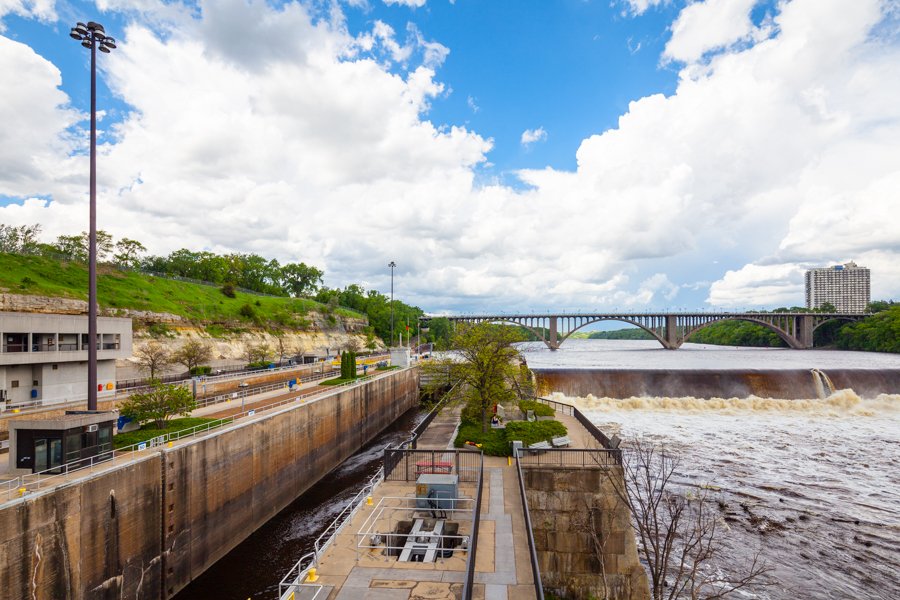
The original structure was built in 1917, with a second lock added in 1932. A boat entering the lock from the downstream end will be raised 30 feet (9.14m) in order to exit on the upstream end. Downstream is now the most likely source for traffic, as the main operation of the lock is for tour boats coming up from ports in St. Paul to sail up to Minneapolis and back.
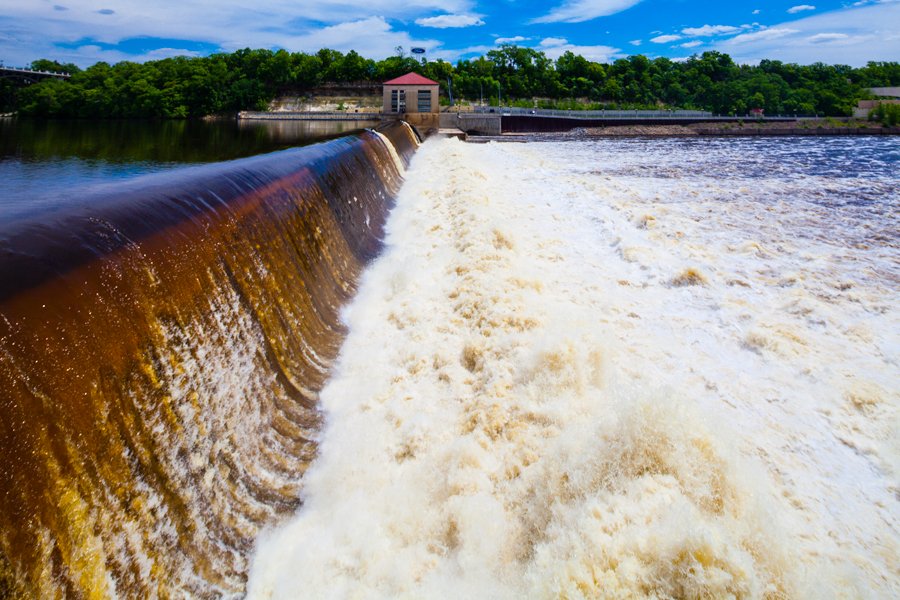
The dam and hydroelectric plant was originally owned by the Ford Motor Company, and used exclusively to power a factory on the bluffs on the east side of the river. You can still see the Ford sign above the hydro plant in some of my photos, but photos are the only place it still exists. The plant was closed in 2011 and has since been demolished to make way for new development, the character of which is still being hotly debated.
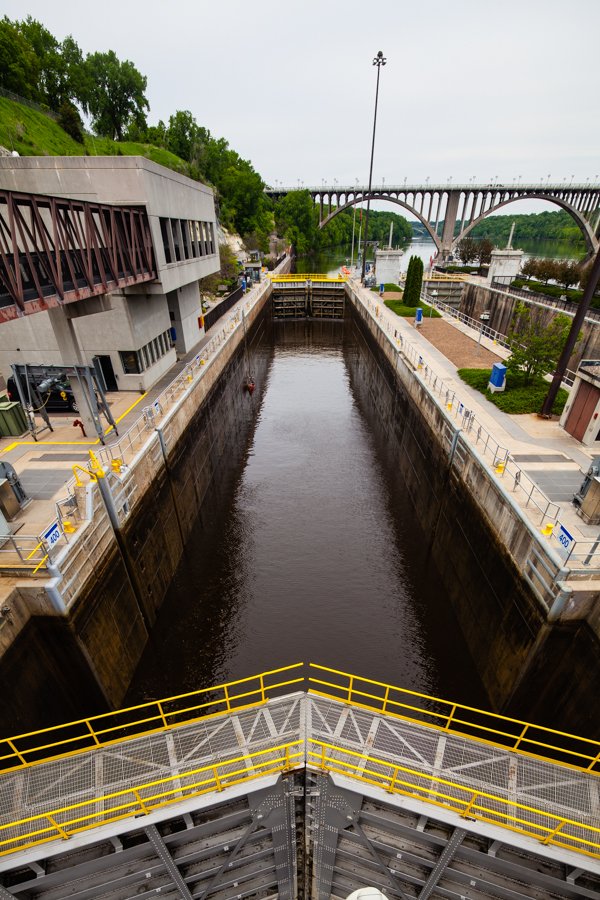
For me it's a peaceful place to interact with the river in what's still an urban setting but an almost-empty one. Though there's room to hold a rather large wedding inside the facility I don't think they do that; I've never seen more than five other people there, other than the Corps employees, and people rarely stay long. Yet it's a good place to watch the river, and the waterfowl, and occasionally even see a boat go through the lock.
Of course the only boat I actually have a picture of going through this lock is a tiny canoe. If I want to photograph boat traffic I have to head downstream to more-active locks like No. 5 in Winona, about a two-hour drive. This one's an easy ten-minute trip from my house.
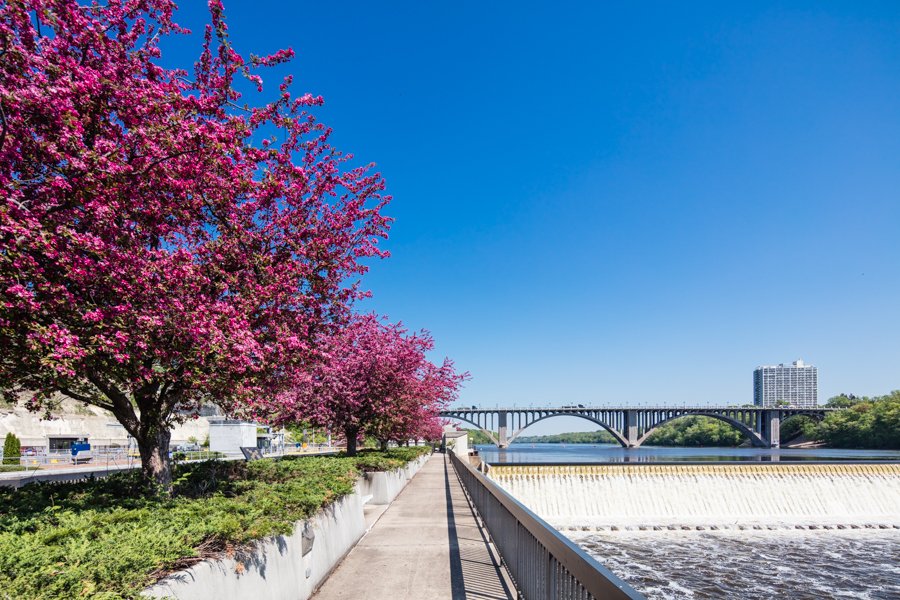
This year I finally got there when the fruit trees were blooming. I've always wanted to but they last about three days here, and I've always had something else going on. I feel like I've now filled my card of warm seasons. I've been there when the water was high in the spring, as you see in many of these photos. I've been there in the fall when there was no flow over the dam at all.
Unfortunately I still haven't figured out a good way to photograph it in the winter. The facility is closed from November to April. It's also only open during the day; the sunrise photos above are from locations outside of the lock & dam proper. (The high point of view is from the Minnesota Veterans Home, not somewhere I want to be sneaking about in the middle of the night.) I've tried photographing from the bridge without much success. Some year maybe we'll get a hard enough freeze that I can walk upriver from Minnehaha Falls.
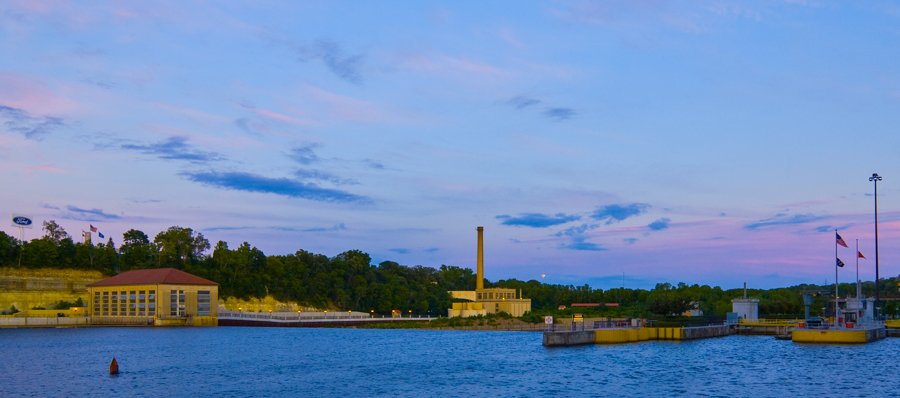
This has been an entry in the 1001 Places to Remember project by @archisteem in collaboration with Architecture and City by @photocircle. Some of the information here was gathered from the National Park Service and Wikipedia Photos are original.
